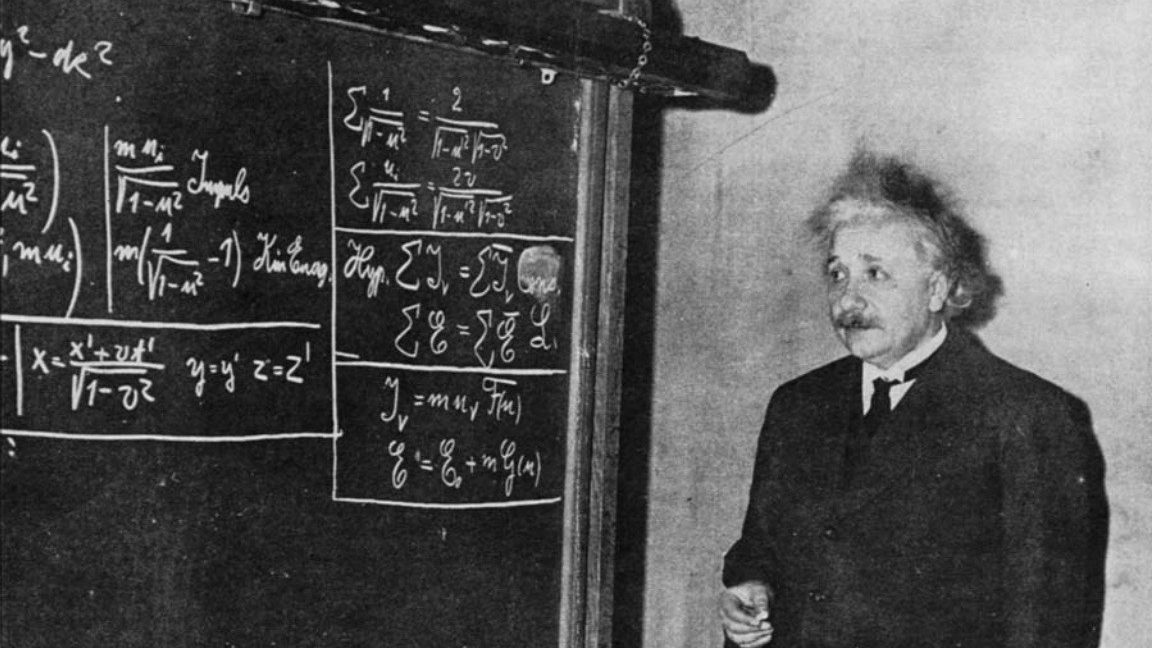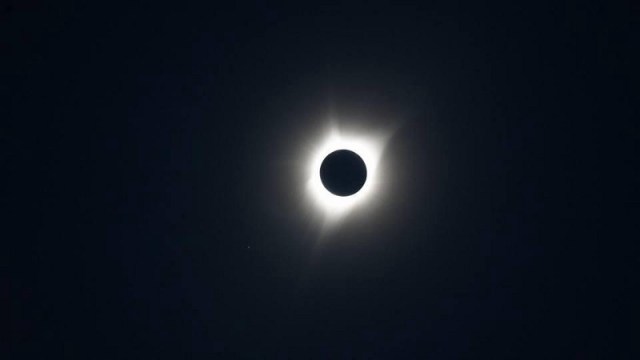Ten Surprises For Scientists And Skywatchers During The Total Solar Eclipse
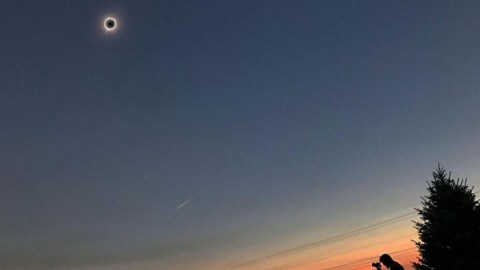
Did you experience totality? I did, for the first time. And it was, even as a well-prepared scientist, beyond anything I expected.
“All that is now
All that is gone
All that’s to come
and everything under the sun is in tune
but the sun is eclipsed by the moon.” –Pink Floyd
There’s nothing on Earth like a total solar eclipse. It’s been said that on a scale of 1 to 10, a partial eclipse is a 5, while an annular eclipse is a 9. Millions of people across America — myself included — experienced the first total solar eclipse of their lives yesterday, and if a partial is a 5 and an annular is a 9, then a total eclipse must be 1,000,000.
In the moments leading up to totality, the light took on a faint, eerie hue, as though someone had placed a low-light instagram filter over the whole world. The sky to the west grew darker, like night was approaching from the wrong direction. A point of light emerged in the sky: the planet Venus. As the Sun’s eclipsed crescent grew smaller and narrower, baily’s beads emerged, and then disappeared.
We took our eclipse glasses off, and the experience and sights were overwhelming.
The corona was indescribable; the sky looked like nothing else; no photograph does the experience any justice. Many among us wept. Despite all my best plans and preparations, the two minutes went by in what seemed like 30 seconds, and then it was all over. Although the temperature had dropped, it didn’t explain the chills we all had. As the Sun re-emerged from behind the Moon, there was an inexplicable feeling of optimism and rebirth. The world was still here, and yet there was a beauty to everything we hadn’t seen, appreciated, or known before.
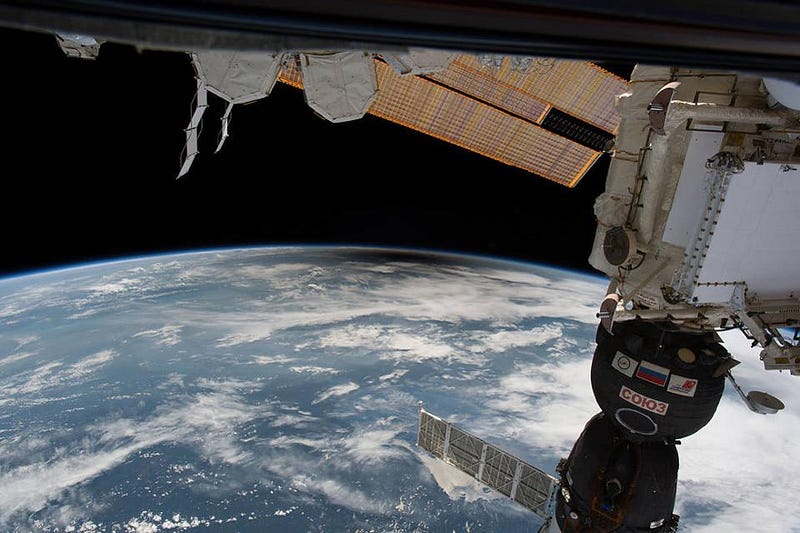
Among all the planets in the Solar System, Earth is unique: it’s the only rocky planet that experiences total solar eclipses at all. As prepared as even the most learned scientists were, a great number of people have never had the opportunity to access a total eclipse until August 21st. While partial eclipses and even annular eclipses have come and gone over the past 25 years, the United States hasn’t seen a total eclipse since 1991, when Hawaii got one; the continental USA hasn’t seen one since 1979, when five states in the northwest experienced totality; and we haven’t had a coast-to-coast eclipse since 1918! Yet tens of millions of people got to experience the full effect of this one, and no matter how well-prepared you were, many things about it were difficult to anticipate. Here are 10 of the most incredible ones.
1.) The landscape darkens gradually, not all at once. The Moon’s umbral shadow falls on the Earth only during those moments of totality, in a 70-mile-wide path during yesterday’s eclipse. Yet surrounding that shadow was an area where so much of the Sun’s light was obscured by the Moon: the penumbral region. Although the Sun itself was still overwhelmingly bright to look it, it created an effect on Earth that can only be seen during an eclipse: an experience of low-light that’s unlike the reddened light of sunrise or sunset. Rather, everything was muted and greyed out, as though someone had literally placed a light filter over the world. Yet there was no light filter; there was only the Moon. We had all anticipated eerie eclipse shadows, but the changed quality-of-light was something that needed to be experienced to understand.
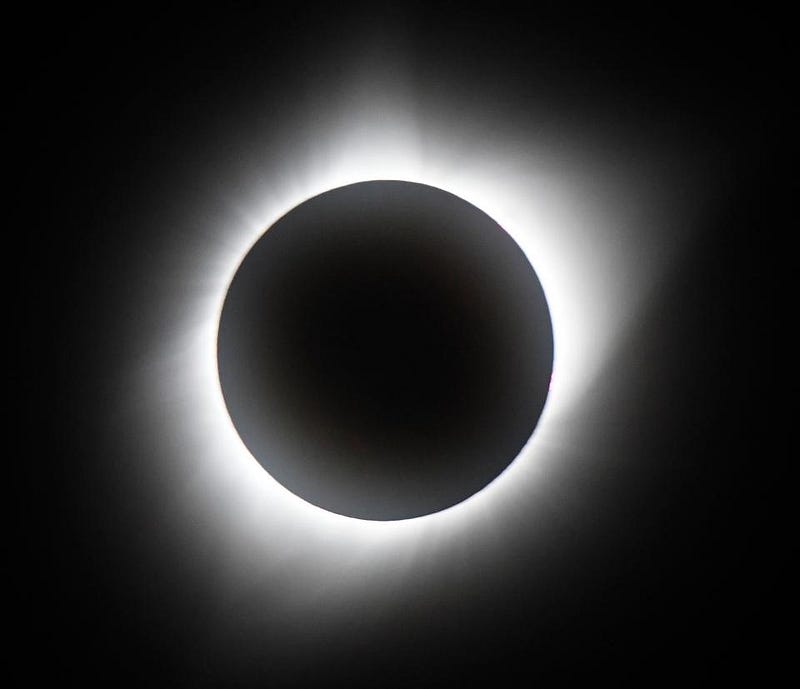
2.) The corona was so big and irregular, with multiple prominences. The corona is a superheated region of plasma located above the photosphere of the Sun, extending for over five million kilometers. It’s known to be irregular, to follow the Sun’s magnetic field lines, to change over time, and to get extremely diffuse towards the outskirts. Yet until you’ve seen it with your own eyes, it’s impossible to appreciate how large, bright, and transfixing it is. Your eyes attempt to focus to bring out more detail, but are overwhelmed by something as bright as the full Moon but as nebulous and wispy as very fine hairs blowing in the wind at a great distance. In three locations, when I experienced totality, the corona was so large it appeared to extend even farther than the diameter of the Sun itself. I only wished I could have seen it for longer.
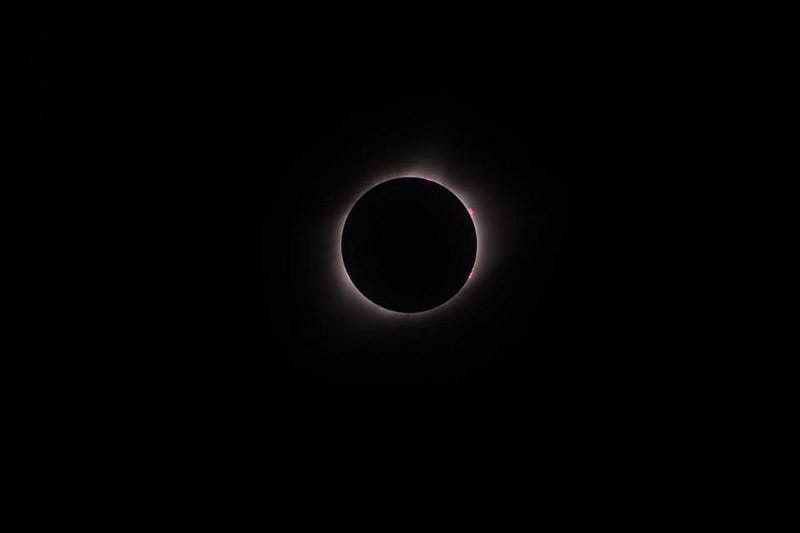
3.) The solar corona really did turn visibly pink in some spots. When some people looked at the corona, myself included, there were some locations around the Sun’s rim that appeared pink to the naked eye. It wasn’tyour eyes playing tricks on you, although I never expected human eyes would be sensitive enough to see that color! When you ionize a hydrogen atom, which the Sun’s corona is more than hot enough to do, you create free electrons. As those electrons fall back down onto the hydrogen nuclei, they go through a series of transitions. The most powerful optical transition is a red line at precisely 656.3 nanometers. Combined with the white light of the luminous corona itself, the hydrogen line creates a pink effect where the Sun’s plasma loops near the photosphere are strongest. The pink effect was real.
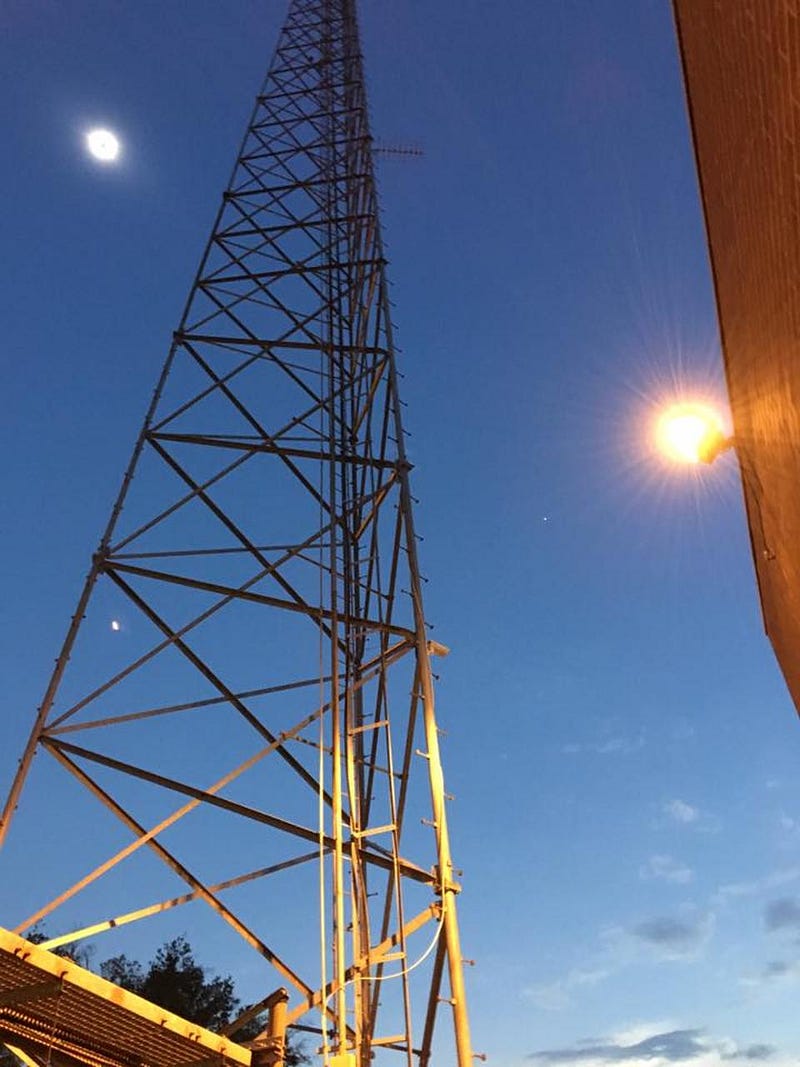
4.) The planet Venus was visible, but not any others. Just a minute or two before totality, the sky became dark enough that the planet Venus was visible to the naked eye. Yet the sky only got slightly darker than it did during those moments, even though the Sun’s brightness diminished by a further factor of many thousands. I had hoped, like many, to see Mars and Mercury close to the Sun, and Jupiter on the opposite side of Venus. Yet it wasn’t to be. With only a 70-mile-wide shadow, the sky never darkened enough to reveal those other worlds. Nevertheless, Venus was as spectacular as ever.
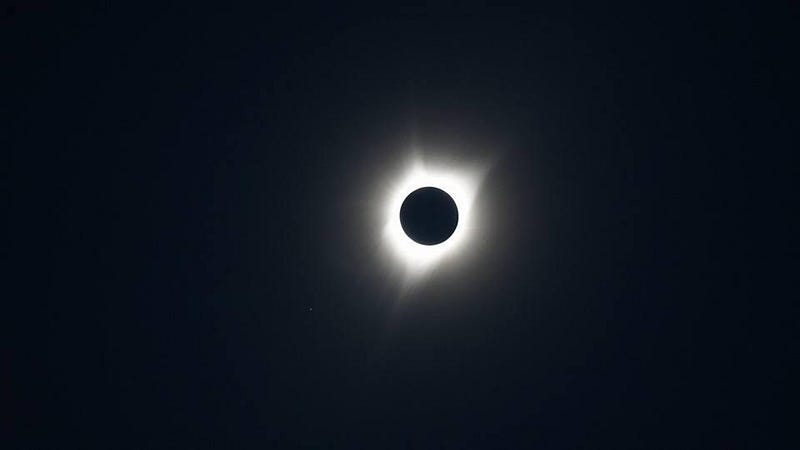
5.) Only one star was visible: Regulus. Just one degree from the Sun, Regulus was the closest bright star to the Sun during this eclipse. It’s the 21st brightest star overall in the night sky, but was the only one I got to see during totality. Nonetheless, it was the most importantstar you could’ve asked to see, since it was so close to the limb of the Sun. According to the predictions of Einstein’s General Relativity, starlight should bend ever-so-slightly by the gravity of the Sun, with the closest stars to the Sun bending by ever-greater amounts. If we had the proper equipment with us to measure to the necessary precision, the sight of Regulus alone would be sufficient to confirm Einstein’s greatest theory.
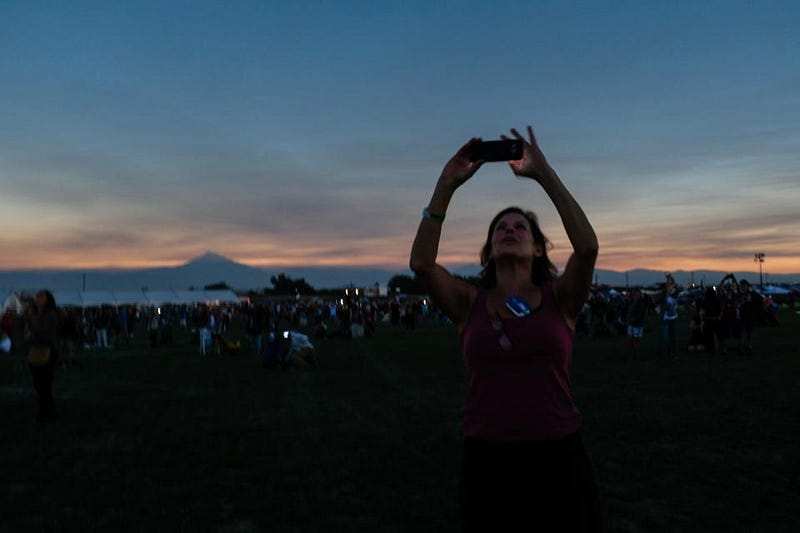
6.) The horizon turned red during totality. Even though there was no sunrise or sunset, the horizon turned that red color we pretty much never see or experience otherwise. This was an optical mystery for centuries, up until the 1970s. Normally, sunlight gets scattered by the atmosphere, including the atmosphere near us, far from us, and in all directions we can see. But when sunlight doesn’t fall on a large region of the atmosphere near us, but does fall near the horizon many scores of miles away, it only has one main option to reach our eyes: scatter once, then pass through the atmosphere on its way to our bodies. The first “single scatter” results in slightly bluer light but still with lots of red, but then the majority of the blue light gets scattered away on its journey to us. What’s left is the red light that arrives at our eyes. Pictures do not do the sight you see with your eyes justice.
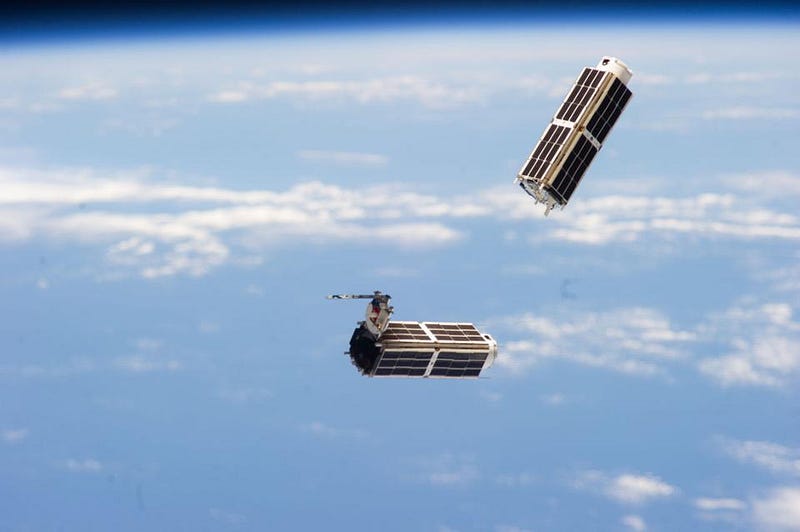
7.) A few lucky Oregon observers got to see a satellite during totality. There are thousands of satellites up in low-Earth orbit, and when one of them passes overhead under the right conditions, it becomes visible against the dark backdrop of night. Yet for those of us watching the eclipse in Amity, Oregon, as totality arrived, a bright point of light appeared very close to where the planet Mercury was expected. Yet it was both brighter than Mercury and was moving rapidly! Over the next few seconds, it passed south of the Sun and moved off to the west: it was one of the Flock-2 Earth-monitoring satellites that have been deployed by multiple missions around our world. Across the United States, a few other places have reported this same serendipity, albeit with a different satellite in each location.
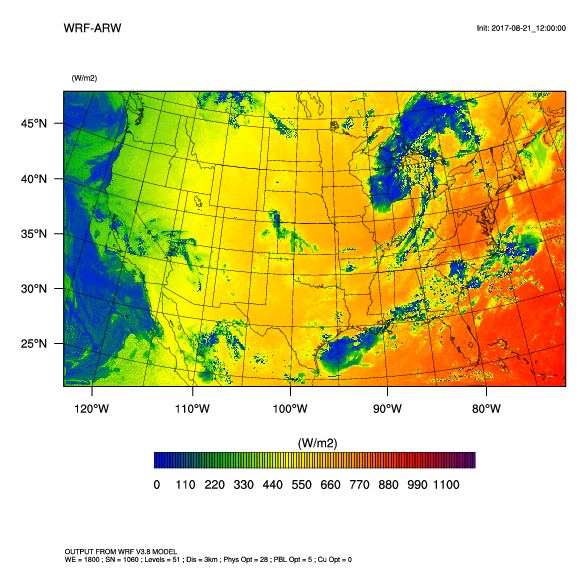
8.) The temperature dropped by more than even the experts predicted. While the temperatures were expected to drop by between 5 and 12 degrees Fahrenheit during the eclipse, even in the central path of totality, many digital thermometers told a different story. Where I was, during the early stages of the partial phase, temperatures reached as high as 82 degrees F, and then, even as the Sun rose higher in the sky, the temperature began to drop. As the Moon covered the Sun, the amount of solar radiation reaching the surface plummeted. By time totality was over, the temperature had cooled down to 65 degrees F, a drop of 17 degrees! Even with no clouds in the sky, the effect was spectacular, and aligned with some of the more significant historical drops ever recorded.
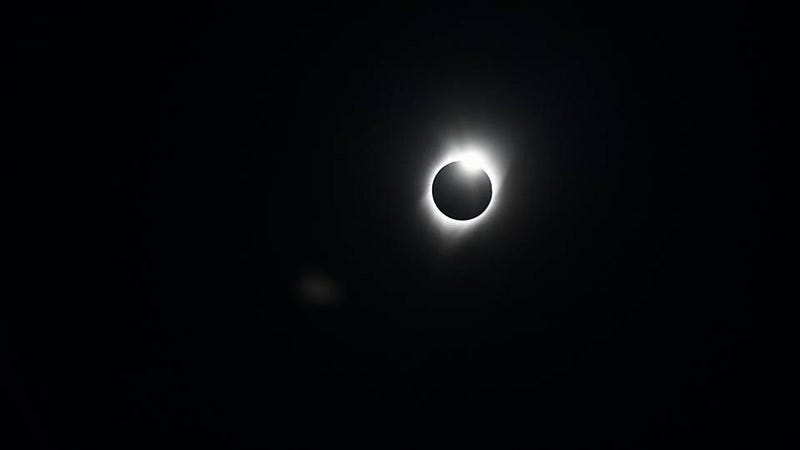
9.) The first sliver of sunlight to reappear after totality was hundreds of times brighter than the corona. When the first point of light reappeared at the edge of the Sun’s limb, outshining the entire corona immediately, it was the signal we all needed to put our eclipse glasses back on. The Sun’s corona was as bright as the full Moon, but the full Sun is some 400,000 times brighter than that. With even 99.9%+ of the Sun still obscured, that first sliver of blinding sunlight, arriving just a single second after totality ends, is loaded with eye-searing ultraviolet light. As tempting as it is to continue looking at the mostly-eclipsed Sun to see as much as you could, the cost isn’t worth your eyesight. I had to fight the temptation, too. I wanted to keep looking. And finally…
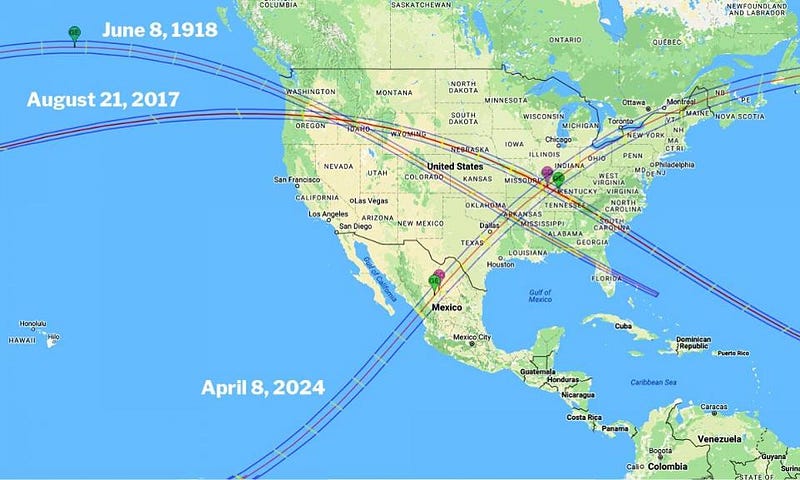
10.) The 2024 eclipse will be twice as long — and even darker — than the 2017 eclipse. The reason so few stars and planets were visible is because there was a limit to how dark it got. The Moon’s shadow is finite in size, and depends on the relative Earth-Moon distance at the moment of maximum eclipse. But in 2024, the next eclipse to pass over the continental United States, the Earth-Moon distance will be close to a minimum. This translates into an eclipse shadow that’s nearly twice as wide, and an eclipse duration that’s more than four minutes long at many locations in Mexico and Texas, among others. If you got to experience the 2017 eclipse, but wanted darker skies, longer totality, and more stars and planets, consider it a warm-up for 2024.
After experiencing my very first total solar eclipse, I’m certain it won’t be my last!
Ethan Siegel is the author of Beyond the Galaxy and Treknology. You can pre-order his third book, currently in development: the Encyclopaedia Cosmologica.




